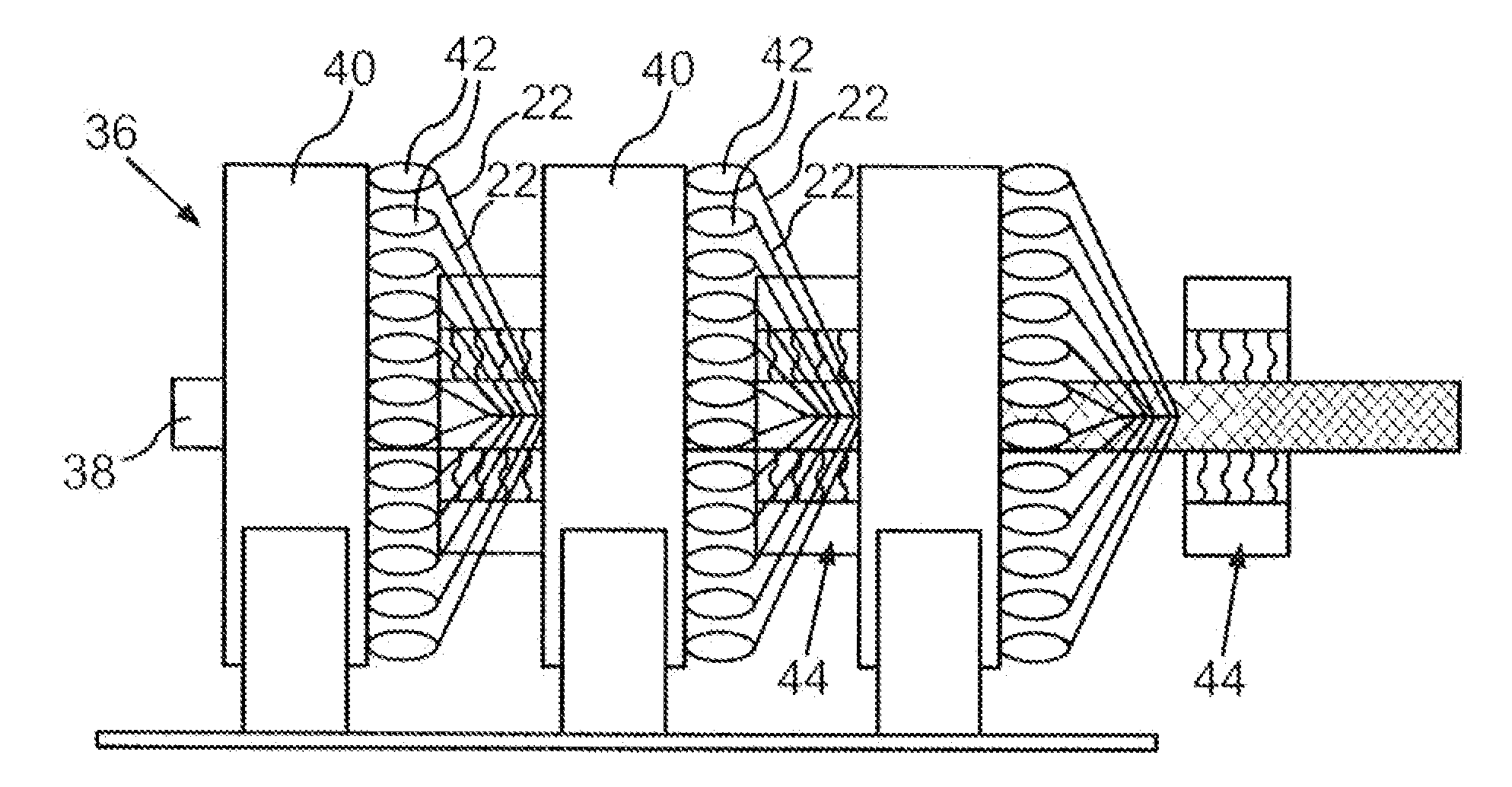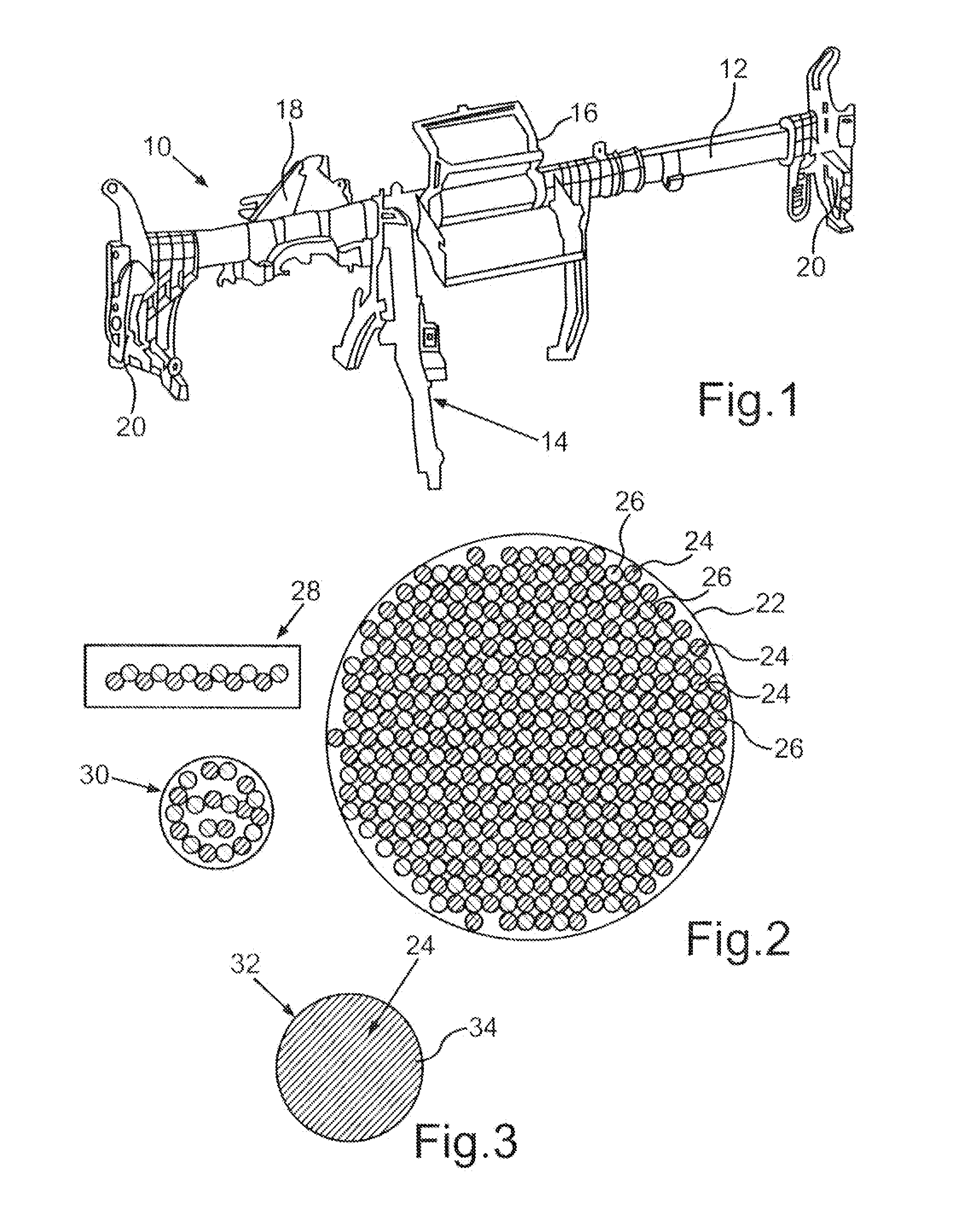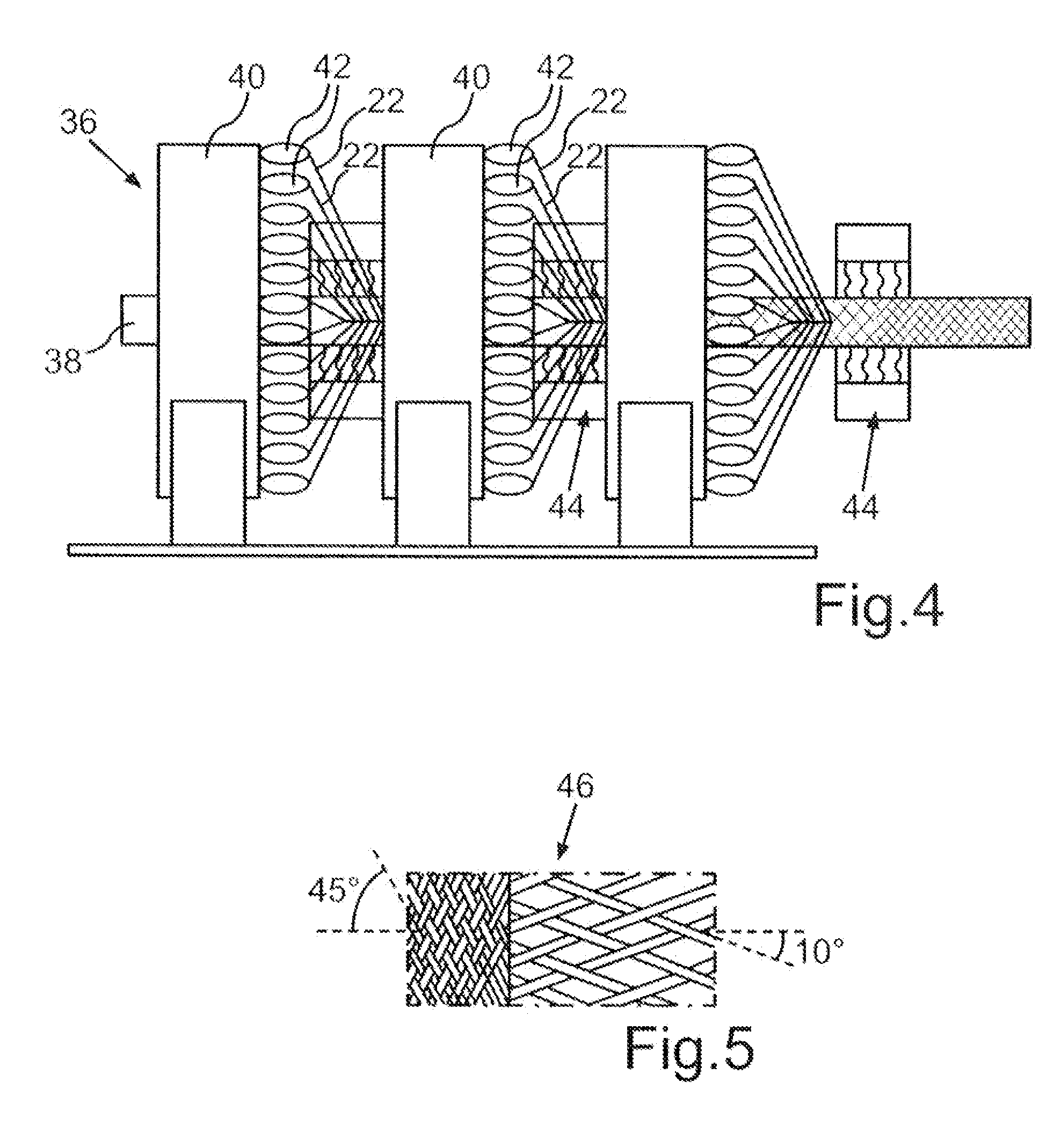Method for Producing a Hollow Profile and Hollow Profile Component
a production method and a technology for hollow profiles, applied in the direction of roofs, other domestic articles, transportation and packaging, etc., can solve the problems of difficult treatment of fibers, low functional integration, and loss of mold, and achieve stable hollow profiles. , the effect of high functional integration
- Summary
- Abstract
- Description
- Claims
- Application Information
AI Technical Summary
Benefits of technology
Problems solved by technology
Method used
Image
Examples
Embodiment Construction
[0031]A cockpit cross-member denoted as a whole by 10 for a motor vehicle comprises a transverse strut 12, which is formed as a hollow profile, as well as a tunnel brace 14, which is also hollow profiled, which supports the cockpit cross-member 10 on the tunnel of the motor vehicle. To create a particularly stable cockpit cross-member 10, the transverse strut 12 and the tunnel brace 14 are produced as single-part, branched hollow bodies from a fiber-reinforced plastic. Further overmolded attachment parts, such as a support frame 16 for a passenger airbag or a steering console 18, are applied to the transverse strut 12. Also, fastening consoles 20 for the lateral fastening of the cockpit cross-member 10 are connected to the cockpit cross-member 10 as overmolded plastic parts.
[0032]Hybrid rovings, as depicted in FIG. 2, are applied for the production of such a branched fiber composite hollow profile. Such a hybrid roving 22 comprises a plurality of reinforcing fibers 24, for example c...
PUM
| Property | Measurement | Unit |
|---|---|---|
| braiding angle | aaaaa | aaaaa |
| internal pressure | aaaaa | aaaaa |
| thermoplastic | aaaaa | aaaaa |
Abstract
Description
Claims
Application Information
 Login to View More
Login to View More - R&D
- Intellectual Property
- Life Sciences
- Materials
- Tech Scout
- Unparalleled Data Quality
- Higher Quality Content
- 60% Fewer Hallucinations
Browse by: Latest US Patents, China's latest patents, Technical Efficacy Thesaurus, Application Domain, Technology Topic, Popular Technical Reports.
© 2025 PatSnap. All rights reserved.Legal|Privacy policy|Modern Slavery Act Transparency Statement|Sitemap|About US| Contact US: help@patsnap.com



